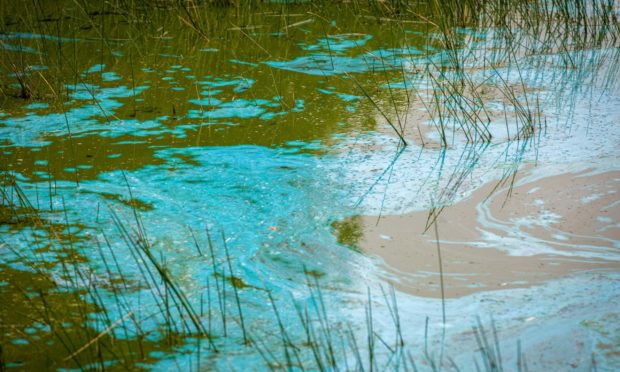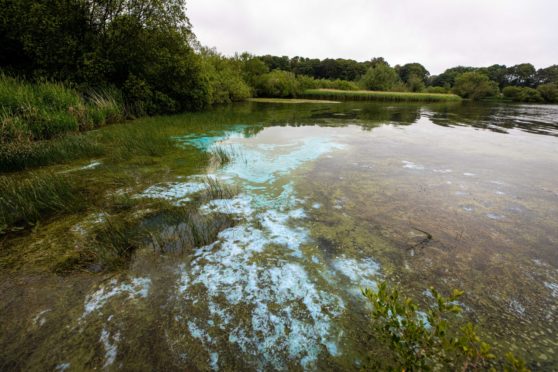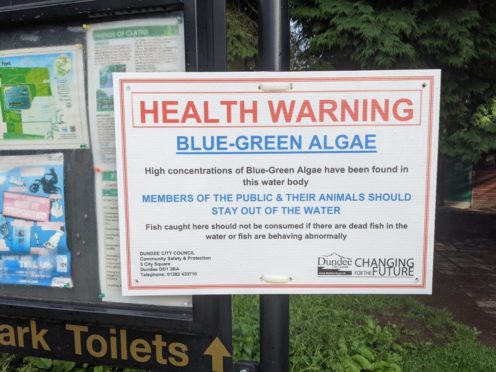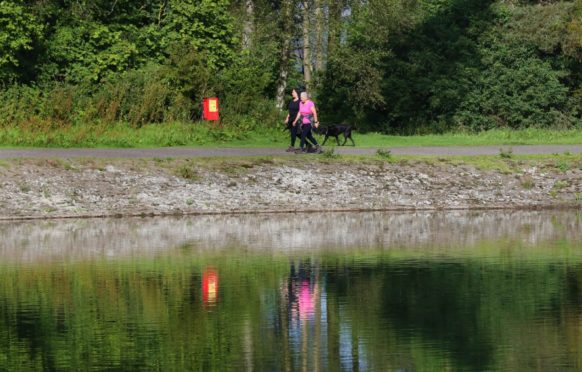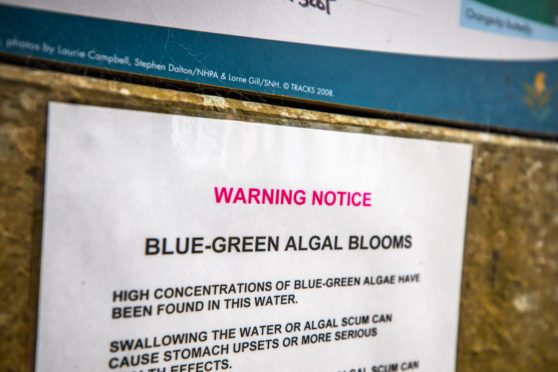Scots have been warned about the dangers of blue-green algae this summer, with risks that blooms of the toxic bacteria may be found in parts of Tayside and Fife.
Cyanobacteria, more commonly known as blue-green algae, can be highly dangerous for humans and pets, especially dogs.
Dundee City Council previously warned locals it had been identified at Clatto Reservoir, with warnings also in place for Loch Leven in Perthshire.
As temperatures rise in Tayside and Fife over summer, the algae has the perfect conditions to grow in still or slow-flowing water.
What is blue-green algae?
Blue-green algae is a naturally occurring bacteria that can grow in ponds, lakes and reservoirs.
Whilst we know it as blue-green algae, it’s not actually an algae but a bacteria known as cyanobacteria.
It thrives especially in still or slow-moving water, and whilst it can occur at any time of the year it’s most dangerous during warmer weather when the concentrations are higher.
How to spot blue-green algae
The algae can be hard to identify unless it’s at its most distinctive colour in the summer months when it can look like green paint on the surface of the water.
Explaining how to identify the toxic bacteria, the UK Centre for Ecology and Hydrology – who have created an app tor report the algae – said the surface scum accumulates along the shore.
They also say the harmless duckweed and filamentous algae can often be mistaken for the toxic blooms.
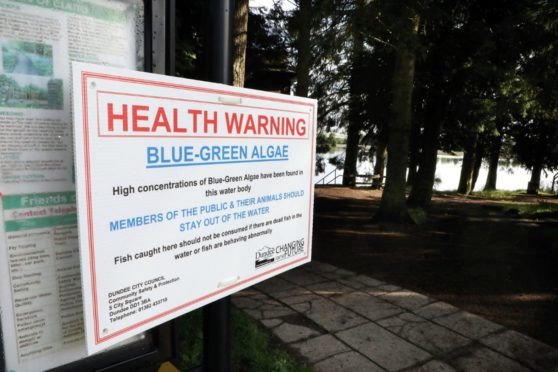
“One method you can use to check if it is blue-green algae is to poke the scum with a stick and if it breaks into small particles, or irregular-shaped clumps, it is likely to be blue-green algae.
“If, however, it has tiny round leaves (about 2-4 mm) it is most likely duckweed. If the stick brings up clumps of hair-like strands or soft tubes then it is harmless filamentous algae.”
It can also give off a musty smell, another potential warning sign according to Science Daily.
Why is cyanobacteria dangerous to humans?
Blue-green algae can be dangerous for humans and sometimes cause severe illness.
Toxins are released by the bacteria into the water, so it’s important to remember it’s not just the blooms you can see that are dangerous.
Not all of it is dangerous, but it is impossible to tell which bacteria is present without analysis in a laboratory.
NHS Scotland said that whilst no deaths or long-term illness amongst humans have been identified, exposure can cause severe illness.
Swimmers and others who have encountered the blooms have often developed skin rashes.
Other effects listed by the NHS include eye irritation, vomiting, diarrhoea and pains in
muscles and joints. People can also have seizures.
Ingesting just half a cup of affected water is enough to make you sick.
What about dogs and other animals?
Vets and other experts warn that cyanobacteria is especially dangerous for animals, and dogs have even been killed after coming into contact with it.
Bute and Cowal Vets in Dunoon in Argyll and Bute shared details of a case earlier this month where a dog was killed after ingesting it.
It had been playing Loch Eck and eventually died as a result of poisoning.
In a post warning people about the dangers, the veterinary practice said: “Call your vet immediately if you think your dog has blue-green algae poisoning, the sooner your dog gets treatment the better their chance of survival.
“If your dog comes into contact with blue-green algae, don’t allow them to lick their fur, wash them (if possible) and call your vet ASAP.
“The more toxins your dog takes in, the worse their poisoning will be.”
Dr Emily Stevenson, consultant in public health medicine for NHS Tayside added: “The risk to small animals like dogs is significant over the summer months as they tend to drink more water in the heat and may eat shoreline algal crusts.”
Other animals can also be affected by the algae, particularly fish, cattle and birds that come into contact with it.
The PDSA said: “As there’s no way of telling if blue-green algae is toxic just by looking at it, keep your dog away from lakes and ponds where it may be present.
“It’s not worth the risk. Don’t let them swim in or drink from any water that could have toxic algae in it.
“Your local council will put up signs in places that regularly have blue-green algae or in places they know currently have the algae after testing the water.”
